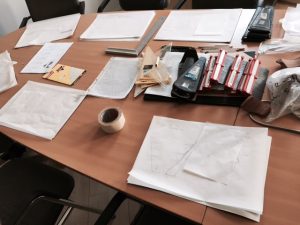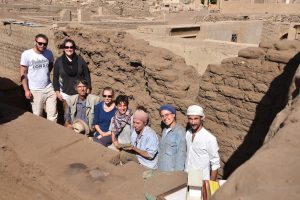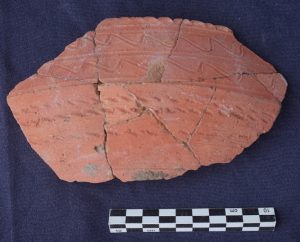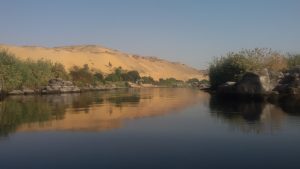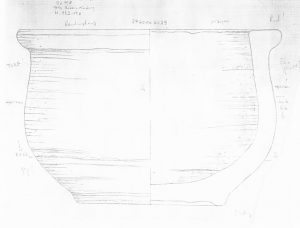In week 7, we started with post-excavation documentation of the burial of Khnum-mes from Chamber 6. There are two aspects that I got completely wrong during excavation while the objects were still in situ, dusty and not yet clean: the total of 6 “stone vessels” from Chamber 6 are actually made of a different material – they are all in faience! Very nice parallels can be found in neighbouring tombs excavated by our French colleagues.
The second modification concerns Khnum-mes’ title – already when taking out his shabti and the faience vessels, I was a bit irritated by my first reading as “wab-priest”. Well – in the magazine, with good light and together with our registrar Meg Gundlach, it is now clear that Khnum-mes was a master goldworker (nbj and Hrj nbjw). This fits of course perfectly to the association of New Kingdom temple towns in general, and Sai Island in particular, with gold exploitation in Nubia!
His shabti – as well as the heart scarab – are real master pieces and of very high quality – it is definitely the highlight of AcrossBorders’ excavation in SAC5 since 2015.

As reported yesterday, excavation work now focuses in Tomb 26 on Chamber 5 – Andrea and Marlies are busy cleaning and documented a good number of burials; amulets, beads and scarabs as well as funerary masks are the most common finds in addition to pottery – several intact vessels of various sizes, with so-called flower pots as most frequent type.
Most important and actually very fresh news, having spent a productive Friday of work in Tomb 26: I managed to locate the southern and western walls and also the corresponding corners of Chamber 5! This was of prime importance at this stage, but not an easy task, given the poor quality of sandstone and a large amount of debris on the walls. Some white wall plaster is still preserved in situ – exactly like we found it in the main chamber 2. Fortunately, the dimensions of Chamber 5 are now confirmed, with only the north-western corner left to clean.
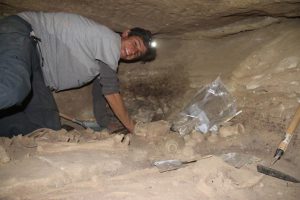
Furthermore, registration and documentation was continued this week, reaching the “drawing phase”. Oliver Frank Stephan and Julian Putner arrived at the beginning of the week and started immediately with drawings of small finds and pottery vessels, both from the town and Tomb 26.
A last group of team members will arrive next week – the final reinforcement for the grand finale of our last season and 3 weeks of excavation in the town, at SAV1 East.

